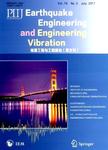Investigating impacts of different building contents on the post-earthquake evacuation time using an agent-based model with considering turning behavior
作者机构:School of Civil Engineering and Architecture Wuhan University of Technology Wuhan China Sanya Science and Education Innovation Park of Wuhan University of Technology Sanya China
出 版 物:《Earthquake Engineering and Engineering Vibration》 (地震工程与工程振动(英文刊))
年 卷 期:2024年第23卷第4期
页 面:939-955页
核心收录:
学科分类:070801[理学-固体地球物理学] 07[理学] 0708[理学-地球物理学]
主 题:seismic fragility evacuation agent-based model route choice built environment
摘 要:Accurate assessment of crowd evacuation inside the post-earthquake environment is critical from many perspectives, but this issue receives much less attention compared to the seismic losses of structural and non-structural components. This could be attributed to the fact that post-earthquake evacuation analysis is complex due to the interaction between human behavior and the actual built environment induced by different building contents. This study attempts to tackle this problem by investigating the impacts of different building contents on post-earthquake evacuation time by using an agent-based model that considers turning behavior. To this end, the agent-based model is first described, including: properties of the agent-based model with turning behavior, key aspects in its formulation considering different evacuation stages, and influence of different building contents (namely, debris from partition walls and ceiling systems, and various types of equipment) on the agent’s behavior. Subsequently, a school building is used as a benchmark problem to validate the model without earthquake, and the findings indicate that the agent-based model can match the real safety drill results reasonably well. After the validation, the school building is subsequently designed in accordance with modern seismic design codes, and the influence of debris and equipment on post-earthquake evacuation time is quantitatively studied using a suite of pulse-type ground motions as input. Based on this case study, recommendations are made for structural and architectural designers in an effort to reduce the potential evacuation time. Specifically, debris induced by partition walls or ceiling systems should be controlled as it has the greatest impact on the total evacuation time.



